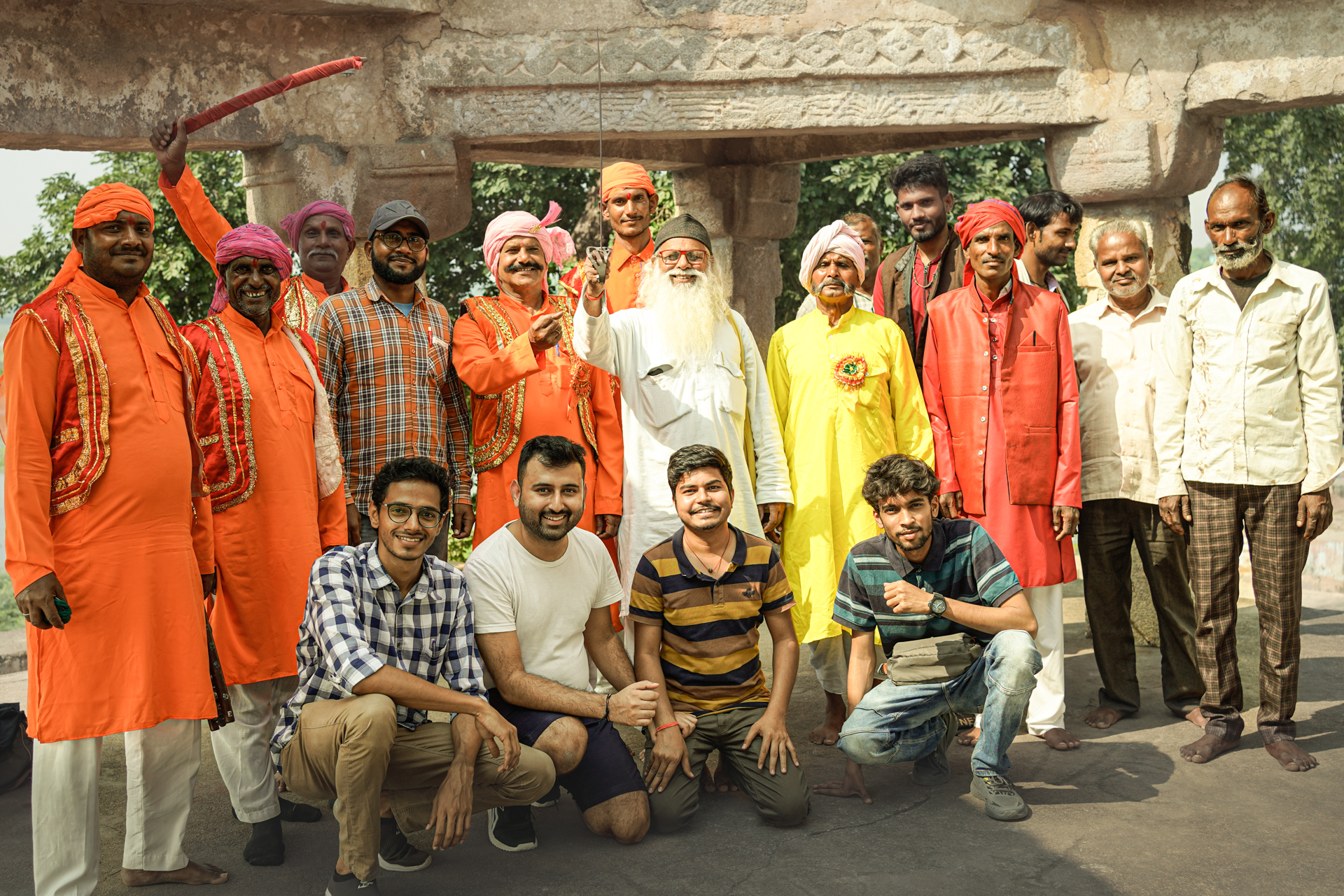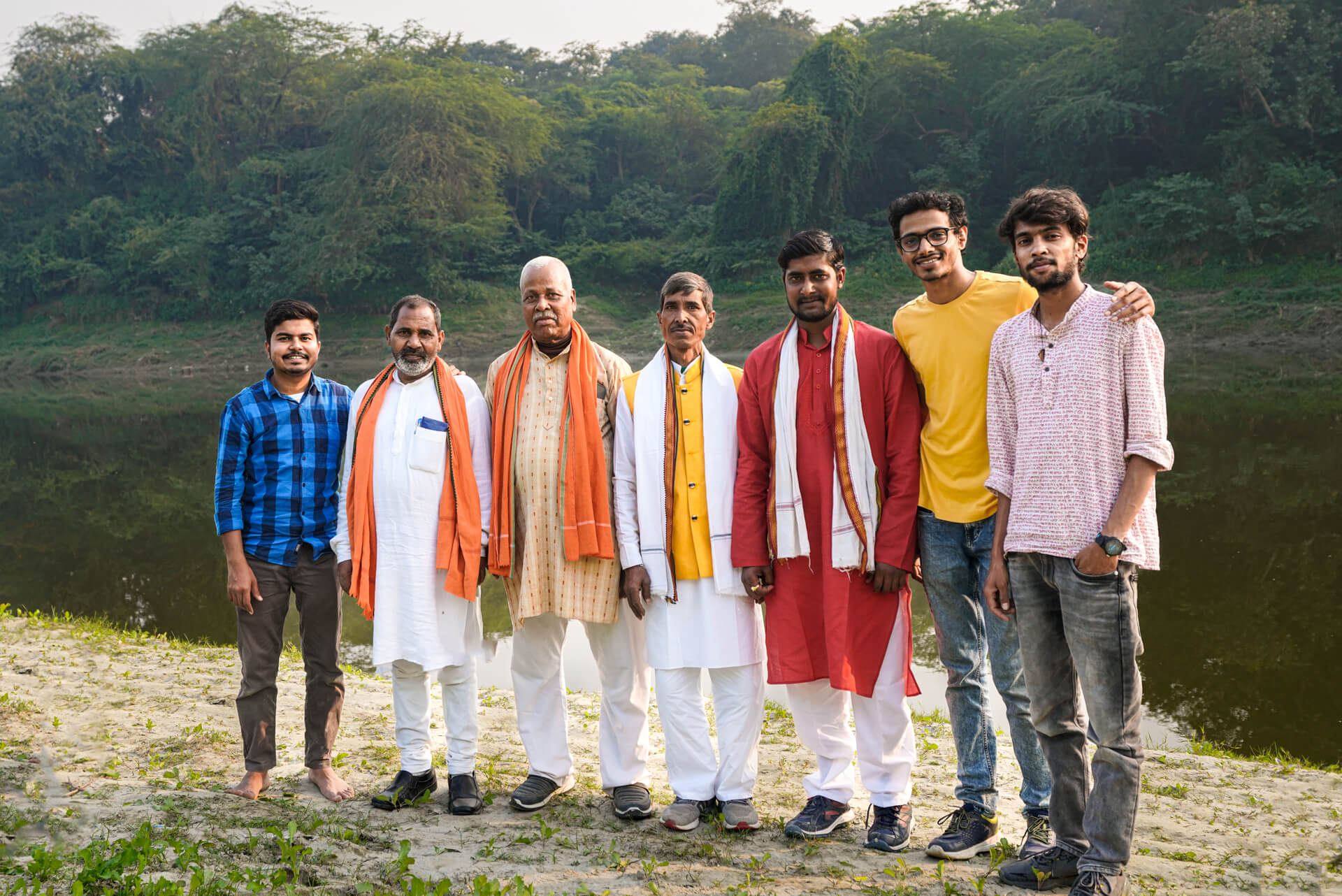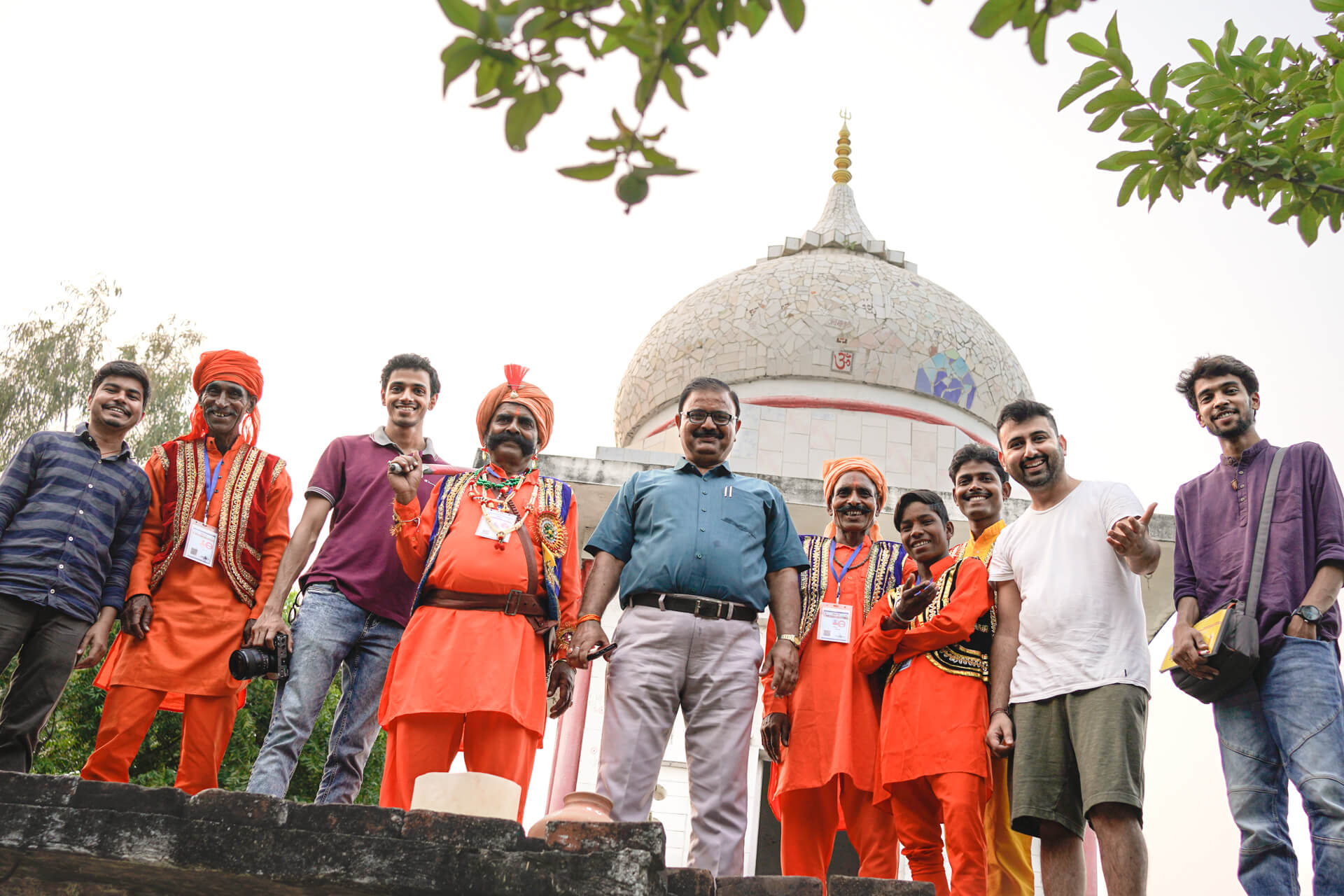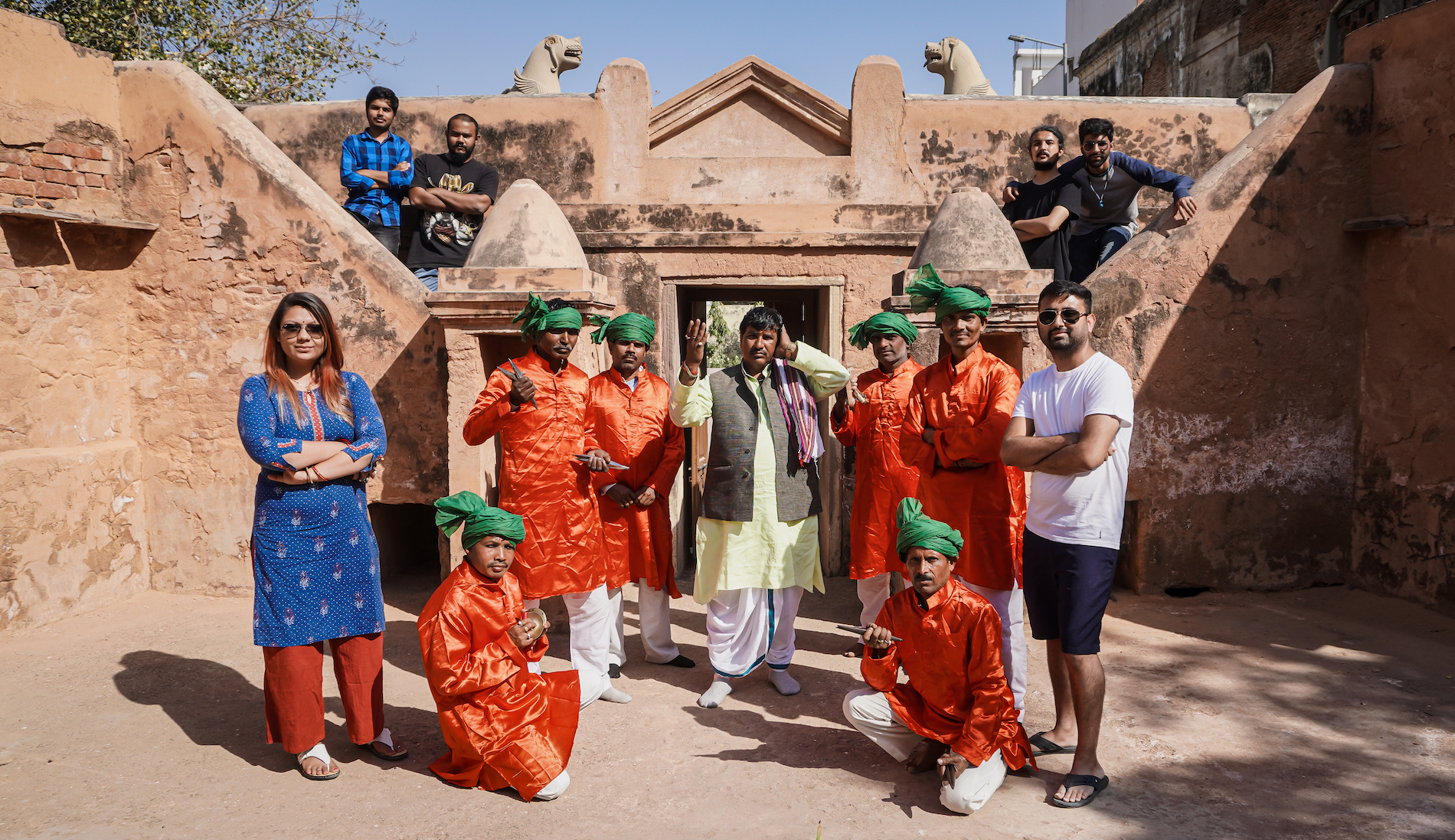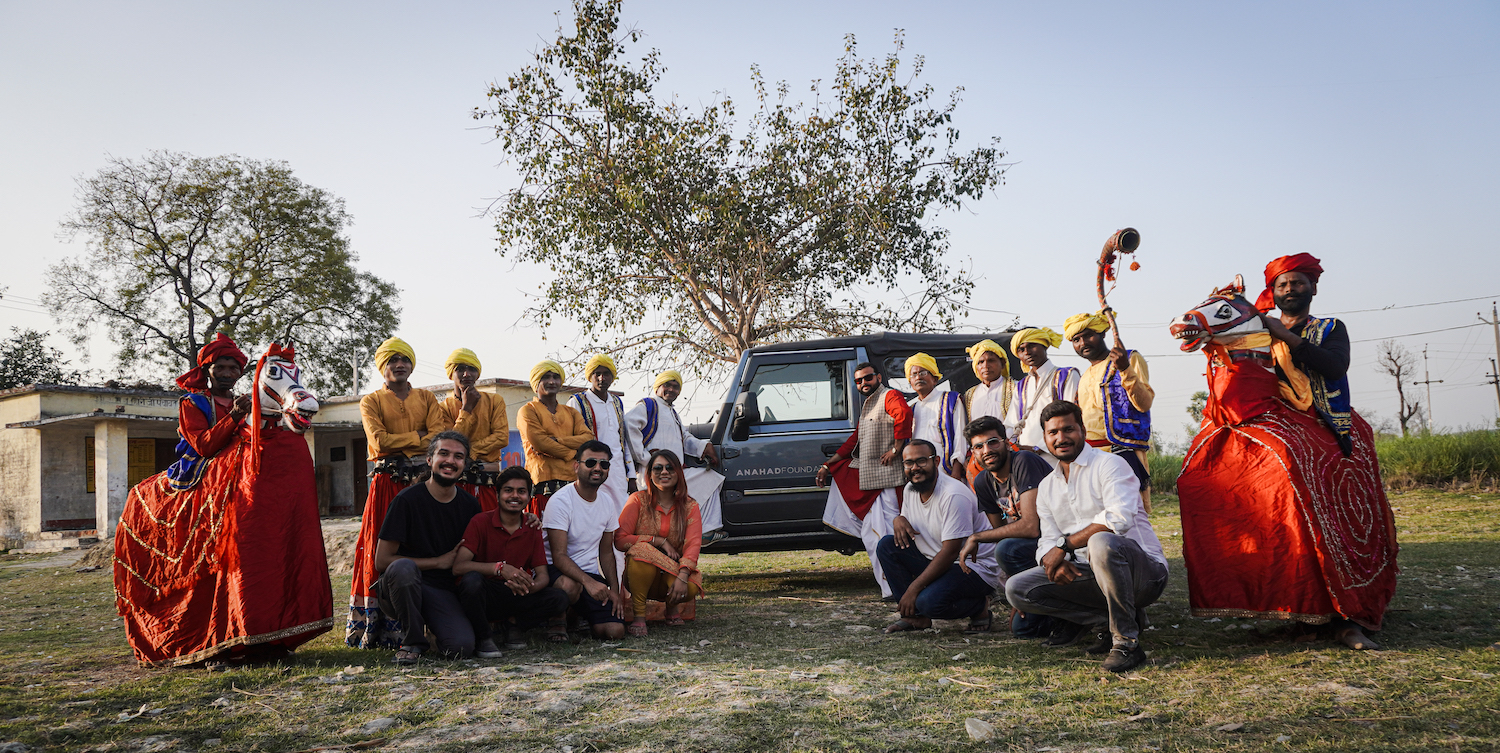
Social Issues, Traditions and Customs in Bundeli Folk Songs
19-year-old Rajni is taking the singing legacy of her 74-year-old father forward.
On Karthik Puranmashi, the full moon night following Diwali, there is a huge fair on the outskirts of Mahoba, near an ancient Sun temple that dates back to the 9th century. The temple, which predates the more famous Konark Sun temple by a couple of centuries, doesn’t receive many tourists. Still, naturally, it was very crowded that day because of the fair and the festivities. Amidst all that chaos and commotion, 74-year-old Laxmi Prasad and his daughter Rajni and the rest of his group performed folk songs of varying genres like Sanskaar Geet and Gari.
The first song, Bacchi ka Geet, talks about the importance of having a girl child and that those parents are truly blessed with a girl child and can raise her and marry her into a good family. Kanyadaan is a wedding ritual in which the bride’s father hands over his daughter’s hand to the bride, transferring the girl’s responsibility over to her husband. It is a common and popular wedding ritual across India, and even performing the ritual for orphan girls is considered a very auspicious and meritorious deed. The song is presented as a prayer to God to bless all parents with the girl child and allow them to have the good fortune of performing Kanyadaan – “Karbe kanyadaan ka kanya, bitiya de daiyyo bhagwan.”
The song is written in the dialect of Hindi spoken in the region, and the tune is composed by Laxmi Prasad himself. Singing alongside him was his 19-year-old daughter, the last of his four daughters. In between the performance, much to everybody’s amusement, she teased him about why he was praying for a girl child when he already had four. Laxmi Prasad jokingly replied that he’d like to have one more, to which Rajni laughed sarcastically. This playful banter between the father and the daughter continued through the evening, adding to their charm and humour. Despite her very young age, Rajni confidently held her own opposite her father, a veteran singer. Laxmi Prasad later told us that Rajni is very popular across Mahoba, especially in the Bhajan and Keertan events, where they perform all night in temples, entertaining the audience and aiding their prayers.
“Bitiya bina hai angna soono, ye toh keh gaye ved puraan. Unke bade bhaagya hai kallu, jin ghar bitiya de dei bhagwan.” Rajni jokingly comments that her father is certainly the most blessed of us all because he has so many daughters. Laxmi Prasad is very fond of his daughters and has raised them all to be singers and musicians. Although he wanted Rajni to learn computers and work in an office, she has taken to singing full-time and is continuing her father’s legacy.
In contrast with the young Rajni is Bihari Lal, who, at the age of 81, is one of the oldest musicians in the region. A man of many talents, he can sing and play the harmonium, dholak, and manjeera, but in that performance, he played the Jhika. He is a retired peon in a college and has learnt music from his father. For him, music has been a form of prayer, and he treats it as his divine duty to continue performing.
The group then performed two Gari songs. Gari is a type of folk song that is sung at weddings. The songs talk about different things, including the blossoming love between the groom and the bride, the divine nature of the union, and even issues about morality and life. Weddings are considered a ceremony with which the couple formally enters the life of householders. Hence, it is seen as a fitting occasion to introduce them to the ways of the world and folk philosophy through these songs. The first song warns us that we are all living our karma, a cycle we cannot escape. Our fortunes and miseries are a product of our karma, which is why we shouldn’t be proud of them or resent them. It elaborates on the harmful ways attachment and worldliness manifest and that they are antithetical to love and moral life.
The second Gari song is centred around a story in which the wife tries to stop the husband from poisoning his brother due to petty enmity. The wife emotionally appeals to reconsider his obligations and blood ties, and that family is ultimately the only ones who do not abandon us in misery. The song perfectly fits into the mood of the wedding, which is about the unison of not just the bride and the groom but their respective families, and reinforces the need to hold relationships and blood ties as pristine.
The final song is an ode to Mahoba – its history right from the time of Chandelis to the present – and its many historical places, educational institutions and beauty. It was dark by the time the performances started, and lights had beautifully lit the Sun temple. The full moon night and the massive Sun temple lit by artificial lights formed a perfect backdrop to their performance, which was all about society, our worldview and the moral choices we are meant to make.


